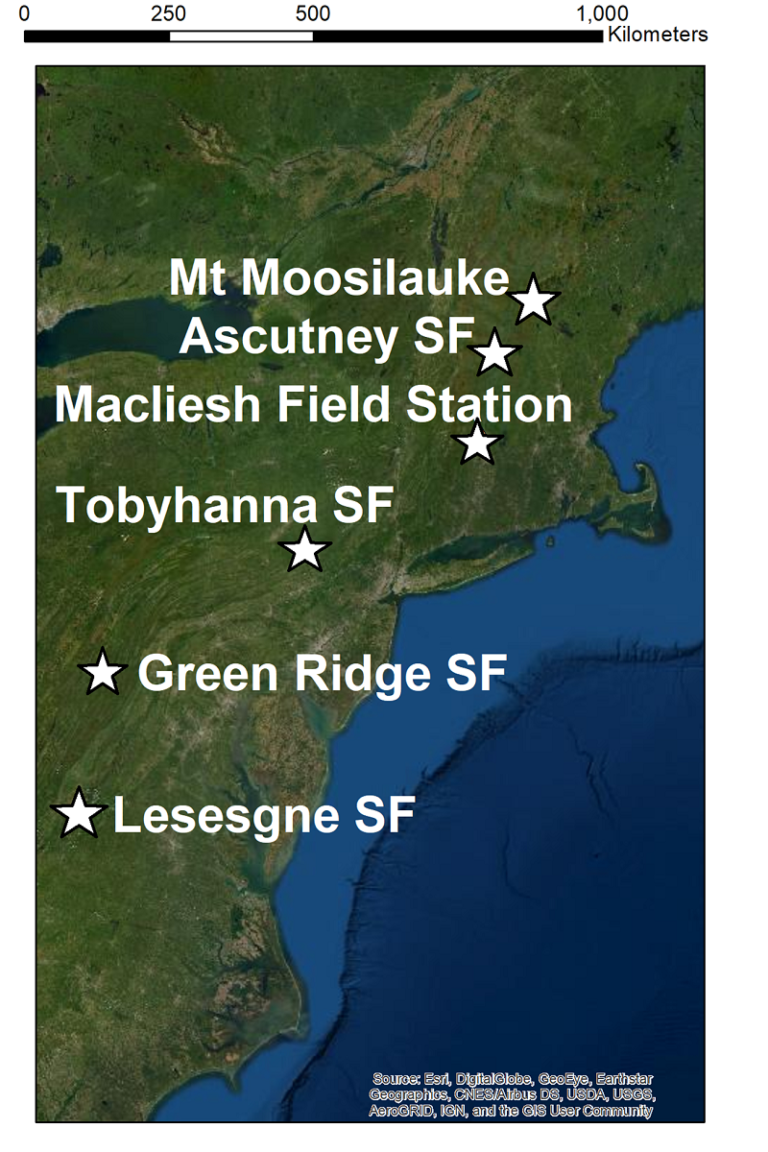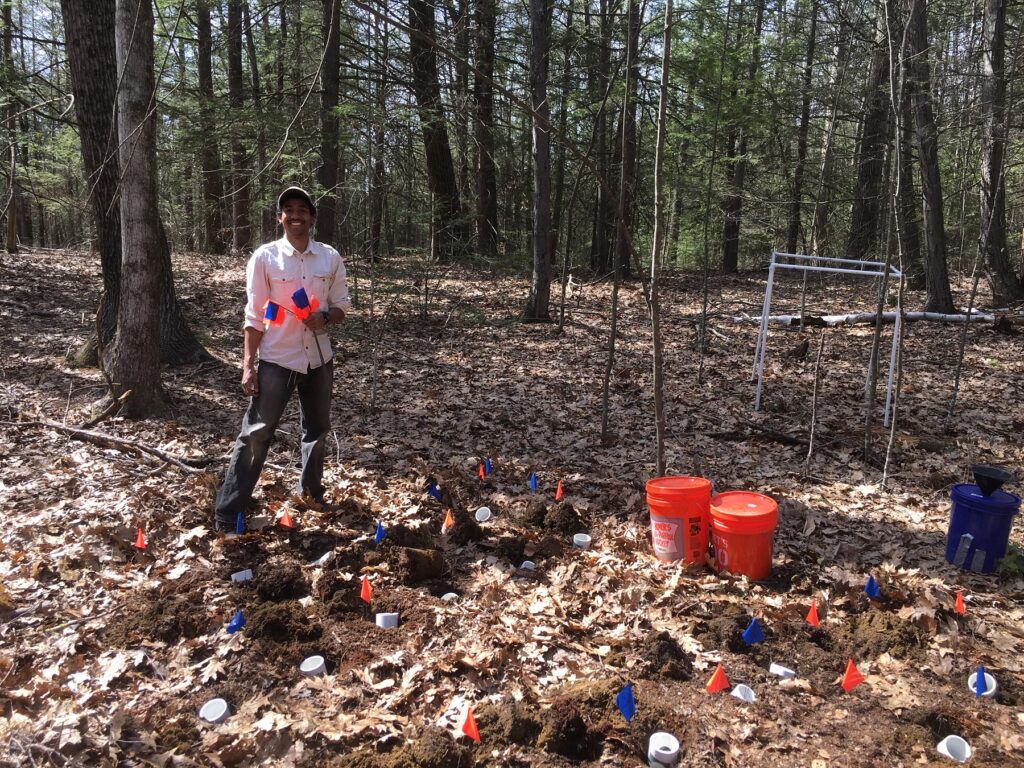I am very pleased to state that the US National Science Foundation has provided myself and my collaborators, Dr. Ashley Keiser of UMass’ Stockbridge School of Agriculture, and Dr. Annise Dobson, with funding to pursue our project investigating synergy among litter, roots, and the forest floor.
The project is based on my observations that as you move from northern forests of New Hampshire to Southern forests of Virginia, the forest floor and roots in the upper mineral soil tend to decrease in upland areas. To me, it seemed that there is an interplay between the availability of the forest floor layer and abundance of roots to access water and nutrients from the decomposing litter. As soon as the forest floor was no longer present, roots were not longer growing at the soil surface. This feedback likely has implications for nutrient and C storage in forest soils.

In 2018, Dr. Annise Dobson and I installed 24 soil columns with known materials at each of the six sites. By using a controlled parent material, we can avoid the typical pitfall of localized parent material controlling how soils behave. Northern soils are typically coarse grained glacial deposits while southern soils have high clay content from the extensive weathering. Here, we are keeping soil material constant. Half of the soil columns have root access ports and the other half have do not. We have also control soils in which not litter but roots can access.
At least twice a year, we have to travel to the sites to empty atmospheric deposition collectors, litterfall traps, conduct litter removal, and other routine site maintenance. We harvested our first set of columns after 1 year of accumulating materials and we are exciting for Fall 2022 when we will harvest our second batch of columns after 4 years of accumulating materials. We are very excited for developing this project and learning more about how nutrients (and potentially toxic elements) are sequestered in soils and how roots-forest floor-litter drive it.
